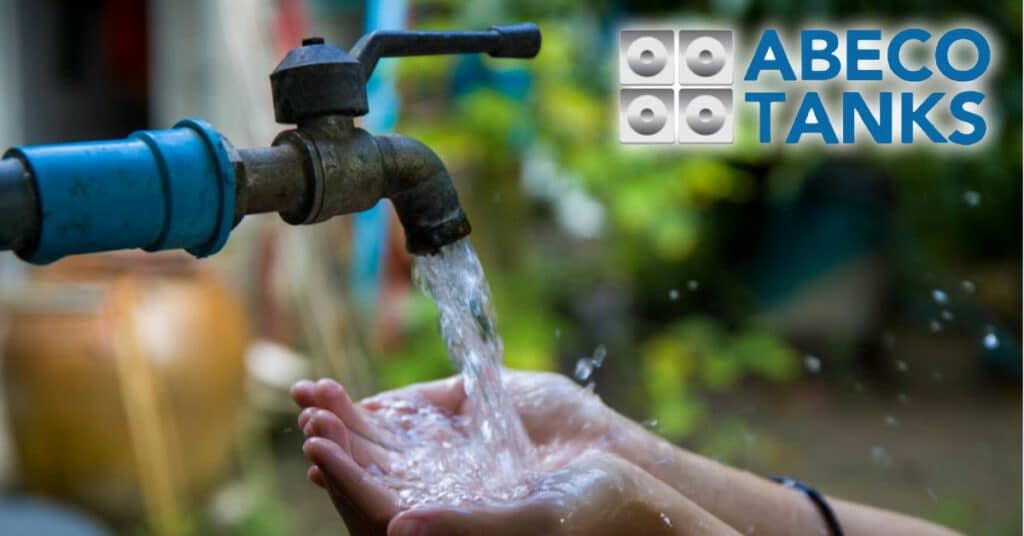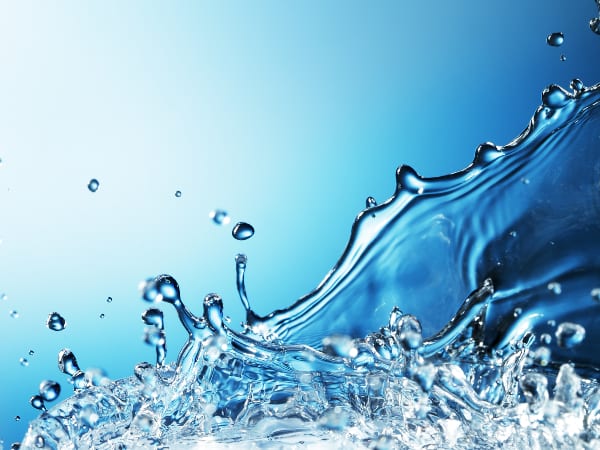
01 Nov These are the Top 20 Water Saving Initiatives
20 Best Water Saving Initiatives
Not just in South Africa, but in many other regions of the world including places like Sudan and Namibia, water is a rare resource. You must save water in all types of environments if you want to help protect this valuable resource. Every precious drop matters, so it’s crucial that every person and organization learns the most efficient ways to conserve water.
Millions of people lack access to clean water, and more than 2.7 billion people endure water shortages for at least one month per year. Less than three percent of the world’s water supply comes from fresh water sources, while the majority of the earth’s naturally produced fresh water is in glaciers, which are unreachable for human consumption. Only 0.007% of all water is fresh and usable.
Everything around us is affected by water. Numerous water systems that sustain ecosystems and the global population are drying up or becoming polluted. The reuse of wastewater has become an essential technique on a global scale. This approach allows individuals to regain water, nutrients, and/or energy. In turn, countries utilize wastewater for irrigation, which accounts for 7 percent of irrigated land in developing nations.
Water use has increased at twice the rate of global population growth. The agricultural sector is responsible for seventy percent of the world’s water withdrawal. Nearly two-thirds of the world might experience water shortages by 2025 if current trends continue. In a large portion of the poor world, obtaining clean water needs financing, transportation, and manual labour.
In many countries, women spend many hours each day walking to collect water, taking them away from their economic and family responsibilities. Although there is enough water on Earth to support the demands of the global population, water distribution, usage, climate, and pollution limit the amount of drinkable water accessible in different regions, resulting in water stress or scarcity.
Numerous regions of the world are experiencing drought and water shortage today. People have access to less water than they require. When there is insufficient water availability for irrigation, some crops and goods can become rare, resulting in food shortages in places that are already under stress. These are the top 20 water saving initiatives.

Why is Water Saving Initiatives Important?
Water is essential for survival. Water is important for life and is also a fundamental component of every material thing. As much as 71% of the planet is submerged in water, yet, just 1% of the water is actually potable. There can be no doubting the value of water, as it is essential for all forms of life and is especially crucial to the survival of humans.
Due to global warming, precipitation patterns have shifted, leading to a serious water shortage in South Africa’s catchment area. The good news is that water levels are increasing in most of the drought-affected areas. Unfortunately, efforts must still be made to maintain above-constant dam levels and fill them to within a percent of capacity.
To ensure water is used in a sustainable way, everyone must do their part. We take a look as how water can be saved in your home, organisation and garden, which is essentially where you spend most of your time.
Conserving water in your home
Starting at home, it is essential to understand how much water you can realistically conserve. Utilizing efficient approaches, you can significantly minimize the amount of water used in each room of your home. We pay particular attention to kitchens and bathrooms, where the most water is utilized.
Kitchens
When washing dishes, use basins and do not leave the water running. The basin can be used to rinse vegetables or dishes with freshwater. When washing dishes, use boiling water since extremely hot water is more effective. Utilize one-pot meals when preparing meals. Instead of boiling your vegetables, steam them. In doing so, you cook your vegetables in a healthier manner.
Before loading your dishes into the dishwasher, scrape and wipe them clean so you can use a shorter cycle. Place a full load of laundry into the washer and dishwasher.
Bathrooms
Reduce your bath time in favour of a shorter shower. You can save a lot of water by only taking one shower per day and not taking a bath. Install low-flow showerheads. Shortening your shower time is even less of a hassle when you only have to adjust one temperature lever (instead of two taps). Keep this in mind when building a new or renovating am existing bathroom.
A shower basin could also be used. Save the water from your showers and flush your toilet with it by filling the cistern or pouring it directly into the bowl. The amount of water used for toilet flushes should be minimized by flushing the toilet only when absolutely necessary, and lifting the handle for a shorter flush. A block or bottle dropped into the cistern can help keep the water level down and allow the cistern to hold less water.
Conserving water in your business
Water is required for all production and consumption, affecting businesses directly. Enterprises play a crucial part in the road towards water conservation and can persuade individuals, communities, and other businesses to save water in an efficient manner.
Educate your staff on the significance of water conservation. Ensure that they are aware of how to conserve water at home and at work. Initiating a water conservation effort within the organization is a commendable move.
Perform regular water conservation audits. This will enable the organization to track how much water is consumed and which locations consume the most.
Only flush the toilet when required. When cleaning workplace space, avoid using an excessive amount of water.
Conserving water in your garden at home or at your business premise
Plants need water to survive, however, it is feasible to lower the amount of water required to keep plants healthy. Water conservation in the garden is just as important as water conservation at home or in the workplace. 70% of households with gardens utilize as much as 46% of their water for gardening.
Plant succulents and other plants that conserve water. The best plants will likely be those that exist naturally in your region, as they will have adapted to the local rainfall and should not require much further care. Eliminate invasive and thirsty for water plant species. Check that none of the plants in your garden are thirsty for water, such as invasive alien Pine trees, Eucalyptus/Gums, Wattles, and Australian Acacias and Jacaranda trees.
Spread wood chips or mulch throughout your garden beds. This method will reduce soil evaporation and inhibit the growth of weeds. Similarly, ground cover plants can serve this purpose. Use a shade cloth to shield your vegetable crop from the sun. This can discourage animals while decreasing evaporation. You can even replace your lawn by requesting indigenous and water-efficient ground cover plants from your local nursery. If you have a lawn, wash your vehicle on it.
Invest in a greywater system. Invest in a water tank and connect all your gutters to it. If the tank fills up and you have a swimming pool, the overflow water could go into that. Your water tank can serve as emergency drinking water (when filtered) or be used in the toilet and garden. Use a drip irrigation system, instead of watering with a hose. This method slowly drips water and means that a lot less water is lost to evaporation.
If you have a swimming pool, deactivate the automatic filling feature. In addition to conserving water, a consistently falling water level will alert you to system leaks. Make certain you have a pool cover to slow the rate of water evaporation. This will significantly affect your water consumption. Install a backwash reservoir. A backwash tank stores your pool’s backwash water and returns it to the pool so that it is not wasted.
Following are 20 ways that you could implement to save water:
20 WAYS TO SAVE WATER
- Fix leaking faucets and toilets as soon as possible, since a slow drip consumes between 56 and 75 litres of water every day.
- Use a displacement device (a water-filled bottle) in the toilet tank to lower the required amount of water for flushing.
- Reduce the frequency of toilet flushing whenever possible.
- Consider a toilet with a small capacity when replacing an old one.
- Use the toilet exclusively for what it was designed. Don’t flush rubbish or tissues down the toilet.
- Shorten your showers.
- Don’t let the faucet run while shaving or brushing your teeth. Only use it when required.
- Allow smaller children to share a bath.
- Only run dishwashers when full.
- Only wash full loads of laundry.
- When hand-washing dishes, fill a basin or sink with water rather than letting the water flow.
- Do not run the faucet for a glass of water. Place a bottle in the refrigerator to keep it cool.
- Never dump grease or oil down the drain. It requires an excessive amount of water to rinse and may block the drain.
- Use buckets and tubs instead of a continuously running hose to wash your car or dog.
- Use a flow-restricting nozzle on your garden hose to dramatically cut water consumption.
- Water lawns and gardens only when necessary and only early in the morning or late in the evening, when evaporation is lowest.
- Cutting grass to a height of no less than 5 or 6 centimetres will reduce water consumption.
- Sweep the sidewalks and driveways rather than hosing them down.
- Recycle as much water as you can.
- If lawn watering is scheduled, let children to play in the hose or sprinkler in a grassy area.
Every day, new technologies are being developed all around us, and creative minds are collaborating to develop new ways to conserve water. In light of the gravity of the water situation, it is of the utmost importance to begin contemplating long-term solutions rather than benefits for the immediate future.
The power of innovation and technology may help us use less water in our day-to-day lives, which is a good thing for the environment. However, water shortages and drought are becoming increasingly common in many parts of the world, and because of this, it is more important than ever to continue to save water. Water that is free from contamination and easily accessible is essential to the general health of humans.
Desalination, often known as the process of converting saltwater into drinkable water, is an area that is undergoing a lot of interest and innovation at the moment. In addition to that, there are also a great deal of ingenious water-saving technologies that are currently available for purchase on the market.
Everyone needs to get on board as far as the conservation of water is concerned, even if doing so merely means putting into practice a few methods that can conserve water.
FAQ’s
Which is the most successful method of water conservation?
One of the best, albeit modest, actions that each person can take to reduce water waste is to collect rainwater.
Why is saving water important?
Utilizing water-saving methods will help you save money and divert less water from our rivers, bays, and estuaries, maintaining a healthy environment. Additionally, it can lower the cost of treating water and wastewater as well as the energy required to pump and heat water.
What is water sustainability?
Water sustainability refers to the availability of fresh water for use in industrial and agricultural processes as well as for human consumption. Despite making up more than 70% of the globe’s surface, sea water cannot be utilized as drinking water without desalination, despite being the most abundant resource on the planet.

